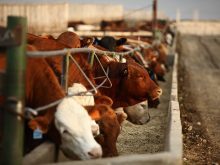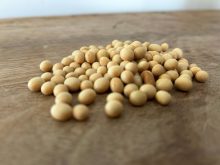Demand from Prairie farmers looking to add to their individual land bases was curbed by a late spring — but farmland prices were still up, according to real estate agents specializing in the field.
“There is desire from farmers to add land, but weather conditions levelled off that demand,” said Grant Tweed of Century 21 Westman Realty at Brandon, Man. “Everyone’s spring was delayed and then rushed. I think people decided to deal with what they had before they started to look at more acres.”
“There’s also very little high-end property for sale in most areas. I think a lot of guys who were going to expand their buying did it in the fall and early winter, so they could do proper planting come spring,” he added.
Read Also

U.S. livestock: Cattle mostly lower Monday
Cattle futures on the Chicago Mercantile Exchange were mostly lower Monday, seeing a modest correction to start the week after…
Parts of Saskatchewan have also seen a lack of demand due to the wet spring — and that in turn led to some land selling much cheaper in eastern parts of the province, according to Tom Neufeld of Coldwell Banker ResCom Realty in Saskatoon.
“Area is definitely having an effect on prices,” Neufeld said. “Some of the flooded areas are the ones with issues, and you’ll see different prices per acre.”
“We sold a quarter section for $250,000 in one area and an identical piece of land sold on the east side of the province for $140,000,” he added.
A lack of buyers and sellers in Manitoba hasn’t brought prices down; Tweed said prices for premium land are up throughout the province.
“In the Red River Valley, areas that have been accustomed to $2,000 per acre probably chased it up to well over $3,000 per acre,” he said.
“In the western part of the province, $2,000 per acre was pretty rare and now we’ve seen sales hit $3,000 per acre at locations with good quality land.”
In Saskatchewan, farmland prices can vary from as low as $650 up to $3,000 per acre. Because commodity prices are still high, many older farmers are looking to sell their land, attracting many outside buyers.
“There are more out-of-province investors looking to add land, because they like the prices,” Neufeld said. “We still have some of the cheapest dirt in Canada compared to other provinces. A lot of farmers are retiring and selling off their land too.”
According to Farm Credit Canada’s (FCC) latest Farmland Values report in April, Prairie farmland value increased at a higher percentage than in the fall of 2012.
At a 13.9 per cent increase, only Quebec had farmland values increase more this spring than in Manitoba. Saskatchewan came in at a 9.7 per cent increase from fall 2012 numbers.
— Brandon Logan writes for Commodity News Service Canada, a Winnipeg company specializing in grain and commodity market reporting.
Related story:
Average farmland values up 10 per cent in six months, April 16, 2013














